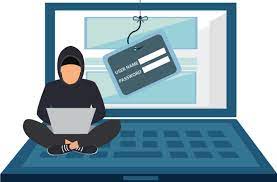Introduction
As cyber threats continue to evolve, it's crucial to stay vigilant and protect yourself from phishing scams. Phishing is a malicious practice where cybercriminals deceive individuals into revealing sensitive information through deceptive emails. In the realm of email security, email checkers play a vital role in identifying and mitigating phishing attacks. In this comprehensive guide, we will explore the connection between email checkers and phishing scams, discuss the effectiveness of various email checkers in detecting phishing emails, and provide essential tips to safeguard yourself from falling victim to these malicious schemes.
Understanding Email Checkers
Email checkers are online tools or services designed to verify the authenticity and validity of email addresses. They utilize various techniques, such as syntax checks, domain verification, and spam database lookups, to assess the likelihood of an email address being genuine or fake. While email checkers can be effective in filtering out suspicious or fraudulent email addresses, they have certain limitations when it comes to detecting phishing scams.
The Limitations of Email Checkers in Phishing Detection
1. Link Inspection: Many email checkers analyze the URLs embedded in emails to detect phishing attempts. However, cybercriminals are becoming increasingly sophisticated in disguising malicious links, making it challenging for email checkers to identify them accurately.
2. Content Analysis: Phishing emails often contain social engineering tactics to manipulate users into taking actions that compromise their security. While some email checkers analyze the content of emails for suspicious language or requests, they may not catch all instances of sophisticated phishing attempts.
3. Evolving Tactics: Phishing techniques are continually evolving to bypass security measures. Email checkers may not always have the latest information on emerging phishing tactics, making it possible for new and sophisticated attacks to go undetected.
Effective Strategies to Combat Phishing Scams
1. User Education: Educate yourself and your employees about the common signs of phishing emails, such as misspellings, urgent requests for personal information, and suspicious URLs. Encourage skepticism and promote a culture of reporting suspicious emails.
2. Multi-Layered Security: Implement a multi-layered security approach that includes robust email filters, up-to-date antivirus software, and regular security awareness training. Combine the power of technology and user awareness to minimize the risk of falling victim to phishing scams.
3. Phishing Simulation Exercises: Conduct regular phishing simulation exercises within your organization to test employees' ability to recognize and respond to phishing emails. These exercises can help identify areas of vulnerability and provide targeted training to improve security awareness.
4. Advanced Threat Protection: Consider using advanced threat protection solutions that leverage machine learning and artificial intelligence to detect and block sophisticated phishing attacks. These solutions can provide an additional layer of defense against evolving threats.
Conclusion
While email checkers can be valuable tools in verifying the authenticity of email addresses, they have limitations when it comes to detecting phishing scams. It's essential to combine email checkers with other security measures, such as user education, multi-layered security, and advanced threat protection, to effectively combat phishing attacks. By staying informed, implementing best practices, and fostering a security-conscious culture, you can minimize the risk of falling victim to phishing scams and protect yourself and your organization from cyber threats.



